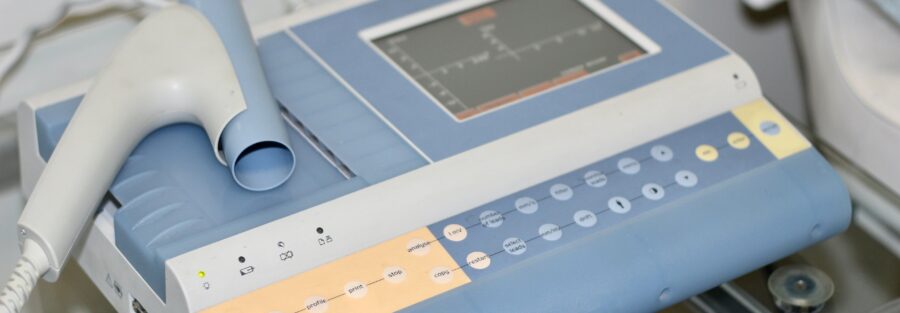As a medical equipment supplier who bills insurance in the US, you face the complex task of navigating the ever-changing world of insurance contracting while adhering to stringent medical coding and DME (Durable Medical Equipment) credentialing requirements. Keeping up with the industry demands may be challenging but is crucial to the success and financial stability of your business. At the heart of this process lies a well-maintained revenue cycle, which is essential for sustaining your business and managing cash flow effectively.
Efficient and accurate billing processes can make a significant difference in your business’s growth and long-term success. By streamlining your insurance contracting and focusing on the correct application of medical coding and DME credentialing, you can ensure that your revenue cycle runs smoothly and minimize the risk of errors or delays in billing and reimbursement.
This blog content strategy aims to provide courteous, intelligent, and solution-oriented information to help medical equipment suppliers optimize their insurance contracting. Our comprehensive guide will explore effective strategies and best practices for streamlining billing processes, ensuring accuracy in medical coding and DME credentialing, and fostering long-lasting relationships with insurance providers. This valuable insight will empower you to improve your business’s efficiency, financial health, and overall success.
Stay tuned as we delve into various aspects of insurance contracting and provide expert advice on how to optimize your revenue cycle management. We will explore strategies that cater specifically to the unique needs and challenges of the medical equipment supply industry, enabling you to excel in a competitive market and achieve sustainable growth. With a focus on intent-driven topics, our blog will be your go-to resource for actionable guidance in the complex world of medical equipment billing.
Navigating Insurance Contract Negotiation
Insurance contract negotiation is a crucial aspect of doing business in the medical equipment supply industry, as it directly impacts the reimbursement rates and contract terms that dictate your business’s financial health. To optimize your negotiations, consider the following strategies:
1. Establish a Baseline: To enter negotiations from a position of strength, take the time to research your costs thoroughly, including factors like DME acquisition, maintenance, and delivery expenses. This information will help you determine an acceptable reimbursement rate for your business and provide a starting point for negotiations.
2. Know Your Payers: Gain a clear understanding of the market share and financial position of the insurance providers you will be negotiating with and consider tailoring your negotiation approach based on the payer’s size and influence. Additionally, research the payer’s specific product offerings and reimbursement structures to determine your target rates.
3. Present a Strong Case: Prepare comprehensive documentation to support your pricing structure, including comparative analysis of peer group data, reimbursement methodologies, and industry benchmarks. Demonstrate your business’s value proposition and the benefits it provides to the insurance provider in terms of quality, efficiency, and patient satisfaction.
Ensuring Efficiency in Medical Coading & DME Credentialing
Accurate medical coding and DME credentialing are essential for maintaining a smooth and efficient billing process. Implement the following best practices to improve the accuracy and efficiency of your coding and credentialing processes:
1. Invest in Ongoing Staff Training: Provide continuous training opportunities for your staff to ensure they remain informed of the latest coding regulations and DME credentialing requirements. This will help mitigate the risk of errors and claim denials, contributing to efficient revenue cycle management.
2. Stay Updated on Regulations and Guidelines: Keep track of industry regulations, guidelines, and updates that impact medical coding and DME credentialing. This knowledge will enable you to maintain compliance and stay ahead of potential issues before they affect your billing processes.
3. Leverage Technology: Utilize medical billing software and other technology solutions to improve the efficiency of your coding and credentialing processes. These tools can help reduce errors, save time, and facilitate seamless communication between your business and insurance providers.
Managing Contract Compliance and Performance Monitoring
Once you have secured an insurance contract, it is essential to monitor your performance and maintain compliance with the contract terms. Implementing a proactive approach to compliance can help boost payer relationships and minimize the risk of claim denials and reimbursement delays:
1. Develop a Compliance Plan: Design a comprehensive compliance plan that outlines your business’s commitment to adhering to insurance contract terms, including reimbursement rate structures, documentation requirements, and performance metrics.
2. Monitor Performance Metrics: Establish a system to track and analyze performance metrics, such as claim denial rates, claim processing times, and patient satisfaction levels. This information will enable you to identify potential issues and address them promptly, ultimately improving your overall performance under the contract.
3. Conduct Internal Audits: Regularly conduct internal audits to evaluate your business’s compliance with insurance contract terms, addressing any identified weaknesses and ensuring continuous improvement.
Building Long-lasting Relationships with Insurance Providers
Establishing and nurturing strong relationships with insurance providers can offer long-term benefits to your business, including improved contract terms, enhanced communication, and potential growth opportunities. Consider the following strategies to foster long-lasting relationships with insurance providers:
1. Be proactive in addressing issues: Anticipate potential problems and take steps to resolve them before they escalate. Provide timely updates to the insurance provider and maintain open lines of communication to demonstrate your commitment to their partnership.
2. Focus on Quality and Value: Strive to provide exceptional service to both the insurance provider and the patients you serve. Offering a high-quality and valuable service will solidify your position as a reliable and preferred partner for insurance providers.
3. Explore Opportunities for Collaboration: Identify and propose collaborative initiatives that align with the insurance providers’ strategic goals. Such initiatives could include joint marketing campaigns, co-sponsored educational events, and shared patient-centered initiatives.
Optimizing Billing Processes for Long-term Success
Successfully streamlining your billing processes and establishing fruitful insurance contracting involves understanding payer nuances, maintaining accuracy in medical coding and DME credentialing, and nurturing ongoing relationships with insurance providers. By focusing on these aspects, you can build a solid foundation for efficient and effective billing processes, optimize your revenue cycle management, and achieve sustainable business growth in the competitive medical equipment supply industry.
Don’t let revenue management cycle challenges weigh your facility down. Wonder Worth Solutions is here to help you optimize your revenue cycle and improve your bottom line. Contact us today to learn more about our customized solutions for ancillary providers.



